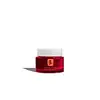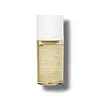What's inside
What's inside
 Key Ingredients
Key Ingredients

 Benefits
Benefits

 Concerns
Concerns

 Ingredients Side-by-side
Ingredients Side-by-side

Water
Skin ConditioningButylene Glycol
HumectantGlycerin
HumectantNiacinamide
SmoothingButyrospermum Parkii Butter
Skin Conditioning1,2-Hexanediol
Skin ConditioningOctyldodecanol
EmollientSqualane
EmollientIsostearyl Neopentanoate
EmollientCetearyl Alcohol
EmollientPropanediol
SolventPalmitic Acid
EmollientHelianthus Annuus Seed Oil
EmollientRosmarinus Officinalis Leaf Extract
AntimicrobialDioscorea Villosa Root Extract
Skin ConditioningAcmella Oleracea Extract
Skin ProtectingPhyllostachys Bambusoides Extract
Skin ConditioningCitrus Junos Fruit Extract
Skin ConditioningCapsicum Annuum Fruit Extract
AntimicrobialCentella Asiatica Leaf Extract
Skin ConditioningEquisetum Giganteum Extract
Skin ConditioningPanax Ginseng Root Extract
EmollientGlycyrrhiza Glabra Root Extract
BleachingKigelia Africana Fruit Extract
Skin ConditioningOryza Sativa Bran Wax
Skin ConditioningGlycine Soja Oil
EmollientPhyllostachys Bambusoides Juice
Skin ConditioningLactobacillus Ferment
Skin ConditioningLactobacillus
Skin ConditioningDicaprylyl Carbonate
EmollientStearic Acid
CleansingPEG-100 Stearate
Ammonium Acryloyldimethyltaurate/Vp Copolymer
Lactic Acid
BufferingAcrylates/C10-30 Alkyl Acrylate Crosspolymer
Emulsion StabilisingEthylhexylglycerin
Skin ConditioningGlyceryl Stearate
EmollientSilica
AbrasiveCaffeine
Skin ConditioningArginine
MaskingCellulose
AbsorbentMica
Cosmetic ColorantIsoniacinamide
Skin ConditioningSodium Hyaluronate
HumectantMagnesium Aluminum Silicate
AbsorbentEscin
TonicPanthenol
Skin ConditioningTocopherol
AntioxidantCyclodextrin
AbsorbentHydroxypropyl Cyclodextrin
MaskingPentylene Glycol
Skin ConditioningAdenosine
Skin ConditioningCaprylyl Glycol
EmollientPalmitoyl Tetrapeptide-7
Skin ConditioningChrysin
Skin ConditioningCI 77891
Cosmetic ColorantWater, Butylene Glycol, Glycerin, Niacinamide, Butyrospermum Parkii Butter, 1,2-Hexanediol, Octyldodecanol, Squalane, Isostearyl Neopentanoate, Cetearyl Alcohol, Propanediol, Palmitic Acid, Helianthus Annuus Seed Oil, Rosmarinus Officinalis Leaf Extract, Dioscorea Villosa Root Extract, Acmella Oleracea Extract, Phyllostachys Bambusoides Extract, Citrus Junos Fruit Extract, Capsicum Annuum Fruit Extract, Centella Asiatica Leaf Extract, Equisetum Giganteum Extract, Panax Ginseng Root Extract, Glycyrrhiza Glabra Root Extract, Kigelia Africana Fruit Extract, Oryza Sativa Bran Wax, Glycine Soja Oil, Phyllostachys Bambusoides Juice, Lactobacillus Ferment, Lactobacillus, Dicaprylyl Carbonate, Stearic Acid, PEG-100 Stearate, Ammonium Acryloyldimethyltaurate/Vp Copolymer, Lactic Acid, Acrylates/C10-30 Alkyl Acrylate Crosspolymer, Ethylhexylglycerin, Glyceryl Stearate, Silica, Caffeine, Arginine, Cellulose, Mica, Isoniacinamide, Sodium Hyaluronate, Magnesium Aluminum Silicate, Escin, Panthenol, Tocopherol, Cyclodextrin, Hydroxypropyl Cyclodextrin, Pentylene Glycol, Adenosine, Caprylyl Glycol, Palmitoyl Tetrapeptide-7, Chrysin, CI 77891
Water
Skin ConditioningGlycerin
HumectantCaprylic/Capric Triglyceride
MaskingCetearyl Alcohol
EmollientGlyceryl Stearate Citrate
EmollientArgania Spinosa Kernel Oil
EmollientButyrospermum Parkii Butter
Skin ConditioningC13-15 Alkane
SolventCoco-Caprylate
EmollientHexyldecyl Stearate
EmollientPassiflora Incarnata Seed Oil
Skin ProtectingPersea Gratissima Oil
Skin ConditioningAmmonium Acryloyldimethyltaurate/Vp Copolymer
Olus Oil
EmollientPropanediol
SolventOleic/Linoleic/Linolenic Polyglycerides
EmollientBiosaccharide Gum-1
HumectantEuphorbia Cerifera Wax
Chenopodium Quinoa Seed Extract
Skin ConditioningCitric Acid
BufferingCrataegus Monogyna Flower Extract
Skin ConditioningCynara Scolymus Leaf Extract
Skin ConditioningDimethyl Isosorbide
SolventEthylhexylglycerin
Skin ConditioningGlyceryl Caprylate
EmollientHydrogenated Rapeseed Oil
EmollientHydrogenated Vegetable Oil
EmollientJasminum Sambac Flower Extract
MaskingLactic Acid
BufferingLonicera Caprifolium Flower Extract
PerfumingLonicera Japonica Flower Extract
Skin ConditioningMaltodextrin
AbsorbentPinus Heldreichii Bark Extract
AntioxidantSesamum Indicum Seed Extract
Skin ConditioningSodium Carboxymethyl Beta-Glucan
CleansingSodium Hyaluronate
HumectantSodium Stearoyl Glutamate
CleansingSpilanthes Acmella Flower Extract
Skin ConditioningTetrasodium Glutamate Diacetate
Tocopherol
AntioxidantTocopheryl Acetate
AntioxidantXanthan Gum
EmulsifyingBenzyl Alcohol
PerfumingPhenoxyethanol
PreservativePotassium Sorbate
PreservativeSodium Silicate Extract
Skin ConditioningWater, Glycerin, Caprylic/Capric Triglyceride, Cetearyl Alcohol, Glyceryl Stearate Citrate, Argania Spinosa Kernel Oil, Butyrospermum Parkii Butter, C13-15 Alkane, Coco-Caprylate, Hexyldecyl Stearate, Passiflora Incarnata Seed Oil, Persea Gratissima Oil, Ammonium Acryloyldimethyltaurate/Vp Copolymer, Olus Oil, Propanediol, Oleic/Linoleic/Linolenic Polyglycerides, Biosaccharide Gum-1, Euphorbia Cerifera Wax, Chenopodium Quinoa Seed Extract, Citric Acid, Crataegus Monogyna Flower Extract, Cynara Scolymus Leaf Extract, Dimethyl Isosorbide, Ethylhexylglycerin, Glyceryl Caprylate, Hydrogenated Rapeseed Oil, Hydrogenated Vegetable Oil, Jasminum Sambac Flower Extract, Lactic Acid, Lonicera Caprifolium Flower Extract, Lonicera Japonica Flower Extract, Maltodextrin, Pinus Heldreichii Bark Extract, Sesamum Indicum Seed Extract, Sodium Carboxymethyl Beta-Glucan, Sodium Hyaluronate, Sodium Stearoyl Glutamate, Spilanthes Acmella Flower Extract, Tetrasodium Glutamate Diacetate, Tocopherol, Tocopheryl Acetate, Xanthan Gum, Benzyl Alcohol, Phenoxyethanol, Potassium Sorbate, Sodium Silicate Extract
Ingredients Explained
These ingredients are found in both products.
Ingredients higher up in an ingredient list are typically present in a larger amount.
Ammonium Acryloyldimethyltaurate/Vp Copolymer (let's call it AAVC for short) is a synthetically created polymer. It's used as a film-forming agent and used to thicken the consistency of products.
AAVC is able to increase the consistency and viscosity of products due to its large molecule size. It also prevents ingredients from separating.
This ingredient is also known as shea butter. It is an effective skin hydrator and emollient.
Emollients help soothe and soften your skin. It does this by creating a protective film on your skin. This barrier helps trap moisture and keeps your skin hydrated. Emollients may be effective at treating dry or itchy skin.
Shea butter is rich in antioxidants. Antioxidants help fight free-radicals, or molecules that may harm the body. It is also full of fatty acids including stearic acid and linoleic acid. These acids help replenish the skin and keep skin moisturized.
While Shea Butter has an SPF rating of about 3-4, it is not a sunscreen replacement.
Shea butter may not be fungal acne safe. We recommend speaking with a professional if you have any concerns.
Learn more about Butyrospermum Parkii ButterCetearyl alcohol is a mixture of two fatty alcohols: cetyl alcohol and stearyl alcohol. It is mainly used as an emulsifier. Emulsifiers help prevent the separation of oils and products. Due to its composition, it can also be used to thicken a product or help create foam.
Cetearyl alcohol is an emollient. Emollients help soothe and hydrate the skin by trapping moisture.
Studies show Cetearyl alcohol is non-toxic and non-irritating. The FDA allows products labeled "alcohol-free" to have fatty alcohols.
This ingredient is usually derived from plant oils such as palm, vegetable, or coconut oils. There is debate on whether this ingredient will cause acne.
Due to the fatty acid base, this ingredient may not be Malassezia folliculitis safe.
Learn more about Cetearyl AlcoholEthylhexylglycerin (we can't pronounce this either) is commonly used as a preservative and skin softener. It is derived from glyceryl.
You might see Ethylhexylglycerin often paired with other preservatives such as phenoxyethanol. Ethylhexylglycerin has been found to increase the effectiveness of these other preservatives.
Glycerin is already naturally found in your skin. It helps moisturize and protect your skin.
A study from 2016 found glycerin to be more effective as a humectant than AHAs and hyaluronic acid.
As a humectant, it helps the skin stay hydrated by pulling moisture to your skin. The low molecular weight of glycerin allows it to pull moisture into the deeper layers of your skin.
Hydrated skin improves your skin barrier; Your skin barrier helps protect against irritants and bacteria.
Glycerin has also been found to have antimicrobial and antiviral properties. Due to these properties, glycerin is often used in wound and burn treatments.
In cosmetics, glycerin is usually derived from plants such as soybean or palm. However, it can also be sourced from animals, such as tallow or animal fat.
This ingredient is organic, colorless, odorless, and non-toxic.
Glycerin is the name for this ingredient in American English. British English uses Glycerol/Glycerine.
Learn more about GlycerinLactic Acid is another well-loved alpha hydroxy acid (AHA). It is gentler than glycolic acid but still highly effective.
Its main role is to exfoliate the surface of the skin by loosening the “glue” that holds dead skin cells together. Shedding those old cells leads to smoother, softer, and more even-toned skin.
Because lactic acid molecules are larger than glycolic acid, they don’t penetrate as deeply. This means they’re less likely to sting or irritate, making it a great choice for beginners or those with sensitive skin.
Like glycolic acid, it can:
Lactic acid also acts as a humectant (like hyaluronic acid). It can draw water into the skin to improve hydration and also plays a role in the skin's natural moisturizing factor (NMF) in the form of sodium lactate.
Studies show it can boost ceramide production to strengthen the skin barrier and even help balance the skin’s microbiome.
To get results, choose products with a pH between 3-4.
Lower strengths (5-12%) focus on surface exfoliation; higher strengths (12% and up) can reach deeper in the dermis (deeper, supportive layer) to improve skin texture and firmness over time.
Though it was originally derived from milk, most modern lactic acid used in skincare is vegan. It is made through non-dairy fermentation to create a bio-identical and stable form suitable for all formulations.
When lactic acid shows up near the end of an ingredient list, it usually means the brand added just a tiny amount to adjust the product’s pH.
Legend has it that Cleopatra used to bathe in sour milk to help reduce wrinkles.
Lactic acid is truly a gentle multitasker: it exfoliates, hydrates, strengthens, and brightens. It's a great ingredient for giving your skin a smooth, glowing, and healthy look without the harshness of stronger acids.
Read more about some other popular AHA's here:
Learn more about Lactic AcidPropanediol is an all-star ingredient. It softens, hydrates, and smooths the skin.
It’s often used to:
Propanediol is not likely to cause sensitivity and considered safe to use. It is derived from corn or petroleum with a clear color and no scent.
Learn more about PropanediolSodium Hyaluronate is hyaluronic acid's salt form. It is commonly derived from the sodium salt of hyaluronic acid.
Like hyaluronic acid, it is great at holding water and acts as a humectant. This makes it a great skin hydrating ingredient.
Sodium Hyaluronate is naturally occurring in our bodies and is mostly found in eye fluid and joints.
These are some other common types of Hyaluronic Acid:
Learn more about Sodium HyaluronateTocopherol (also known as Vitamin E) is a common antioxidant used to help protect the skin from free-radicals and strengthen the skin barrier. It's also fat soluble - this means our skin is great at absorbing it.
Vitamin E also helps keep your natural skin lipids healthy. Your lipid skin barrier naturally consists of lipids, ceramides, and fatty acids. Vitamin E offers extra protection for your skin’s lipid barrier, keeping your skin healthy and nourished.
Another benefit is a bit of UV protection. Vitamin E helps reduce the damage caused by UVB rays. (It should not replace your sunscreen). Combining it with Vitamin C can decrease sunburned cells and hyperpigmentation after UV exposure.
You might have noticed Vitamin E + C often paired together. This is because it is great at stabilizing Vitamin C. Using the two together helps increase the effectiveness of both ingredients.
There are often claims that Vitamin E can reduce/prevent scarring, but these claims haven't been confirmed by scientific research.
Learn more about TocopherolWater. It's the most common cosmetic ingredient of all. You'll usually see it at the top of ingredient lists, meaning that it makes up the largest part of the product.
So why is it so popular? Water most often acts as a solvent - this means that it helps dissolve other ingredients into the formulation.
You'll also recognize water as that liquid we all need to stay alive. If you see this, drink a glass of water. Stay hydrated!
Learn more about Water